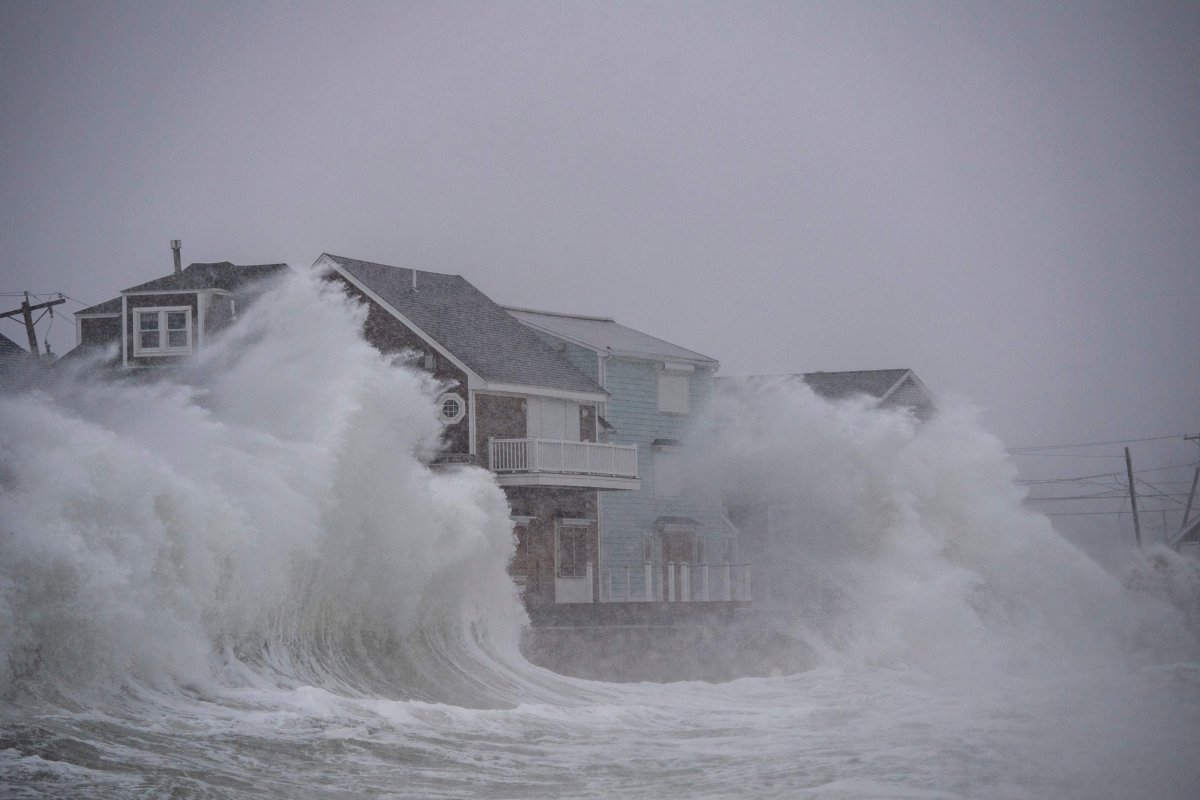Devastating hurricane waves battering the United States grew by 80 percent over the past four decades, a study has found.
The study published in Nature Communications led by Hohai University in China analyzed the wave heights amid tropical cyclones from 1979 to 2022 around the U.S., Mexico and the Caribbean. The researchers discovered that the surface area of the waves caused by the storms grew nearly 20 percent per decade in the North Atlantic Ocean—roughly the size of Florida.
The overall area of ocean waves increased by 6 percent per decade, and the maximum height of waves caused by tropical cyclones swelled by 3 percent every 10 years, according to a summary of the findings.
"The rapid growth of tropical cyclone waves over recent decades is extremely worrying given their immense danger to communities, businesses and ecosystems. Our results show that the threat from their waves is escalating fast across the globe," Dr. Xiangbo Feng, a University of Reading tropical storm expert who co-authored the study, said in a press release.
"Hurricanes whip up huge, devastating waves over that quickly swamp coastlines. Their long, rolling swells also travel hundreds of miles, flooding distant areas, so coastal towns and vessels urgently need to prepare better defenses—especially in the Americas—to avoid damage from these extreme waves."

Hurricanes, also known as tropical cyclones or typhoons depending on the region, are characterized by a swirling storm with a low-pressure center. The spiral produces heavy thunderstorms and strong winds which also push water towards the shore by force, which causes gigantic waves. During a hurricane, the average water level can increase by 15 feet, according to the National Oceanic and Atmospheric Administration.
These weather disasters have been increasing in recent years. In 2023, there were 20 storms in the Atlantic basin, seven of which turned into hurricanes. The increase in wave height, paired with the increased number of storms, is posing a serious threat to North America and the Caribbean. Waves of such a height can cause deaths, destroy buildings, and cause erosion in these regions. They can also contribute to severe flooding.
"We find that in the past 40 years the Gulf of Mexico and the east coasts of US are at particularly higher risk because of tropical cyclone waves," Feng told Newsweek. "This is related to the fact that the North Atlantic storms are becoming stronger and having longer time of impact. In our study, Hawaii also become more vulnerable to these huge waves."
The study discovered that the total wave energy produced by hurricanes has risen by 9 percent each decade—a clear indication that they are getting more serious.
The researchers believe that wave heights will only continue to increase in the coming years, likely as a result of climate change. Global warming is making weather patterns unpredictable and causing more whiplash events—for example, extreme periods of drought followed by extreme rainfall and storms.
"The North Atlantic storm activities are related to the Atlantic Multidecadal Oscillation (AMO). As the AMO is still in the positive phase and this state is likely to last, we anticipate that the risk of tropical-cyclone associated ocean waves will remain in a high level in the next few years," Feng said. "But if the already developed El Niño persists, this may suppress the hurricane activities and their impacts. Thus, there are uncertainties at the moment because we are not sure about how the El Niño state will evolve. Other studies suggest that climate changes could enhance the intensity and frequency of hurricanes, indicating a faster growing threat to the U.S. coasts from associated waves on a long-term timescale."
More research is needed into how climate change is directly impacting wave size, but for now, the scientists urge more preparation in coastal regions, which are under particular threat from this increased wave size.
To date, the highest wave height of any tropical cyclone recorded was during Typhoon Krosa in 2007 in the West Pacific. Wave heights reached nearly 80 feet.
Update 01/11/24, 03:45 a.m. ET: This article was updated to include additional quotes from Xiangbo Feng.
Do you have a tip on a science story that Newsweek should be covering? Do you have a question about hurricanes? Let us know via science@newsweek.com.
Uncommon Knowledge
Newsweek is committed to challenging conventional wisdom and finding connections in the search for common ground.
Newsweek is committed to challenging conventional wisdom and finding connections in the search for common ground.
About the writer
Robyn White is a Newsweek Nature Reporter based in London, UK. Her focus is reporting on wildlife, science and the ... Read more
To read how Newsweek uses AI as a newsroom tool, Click here.








